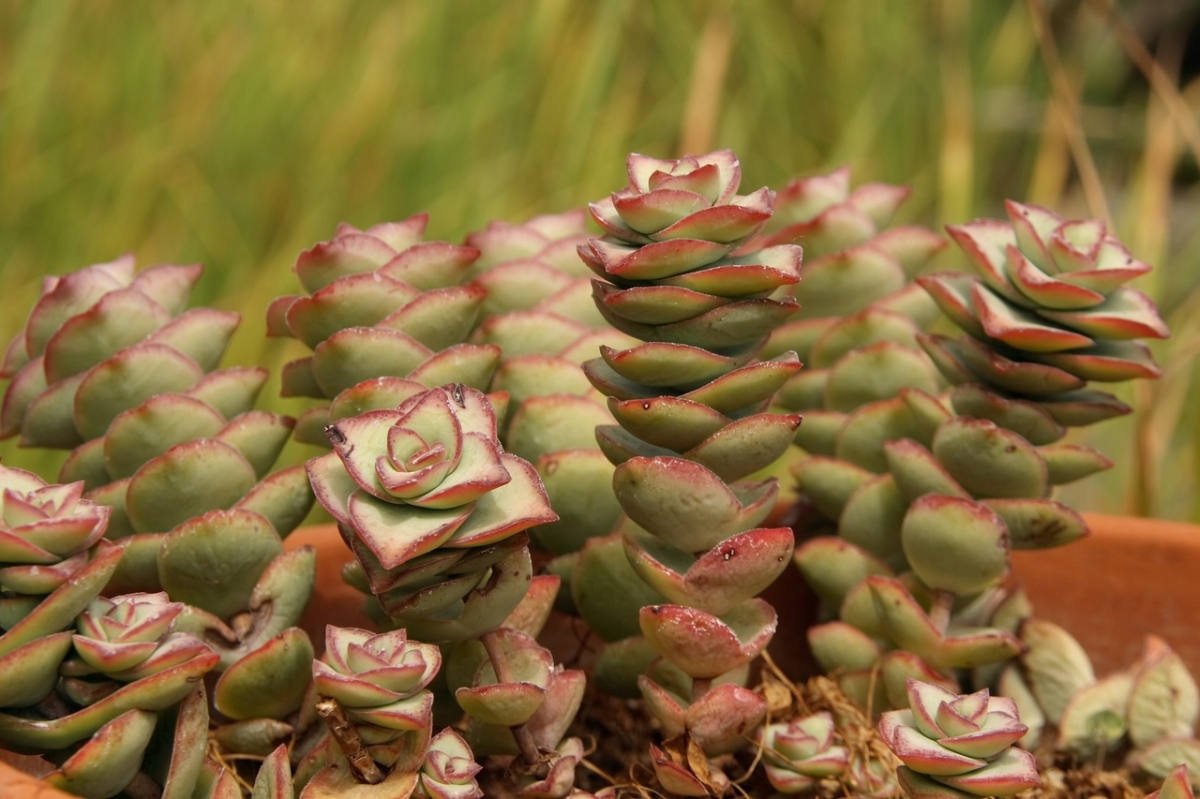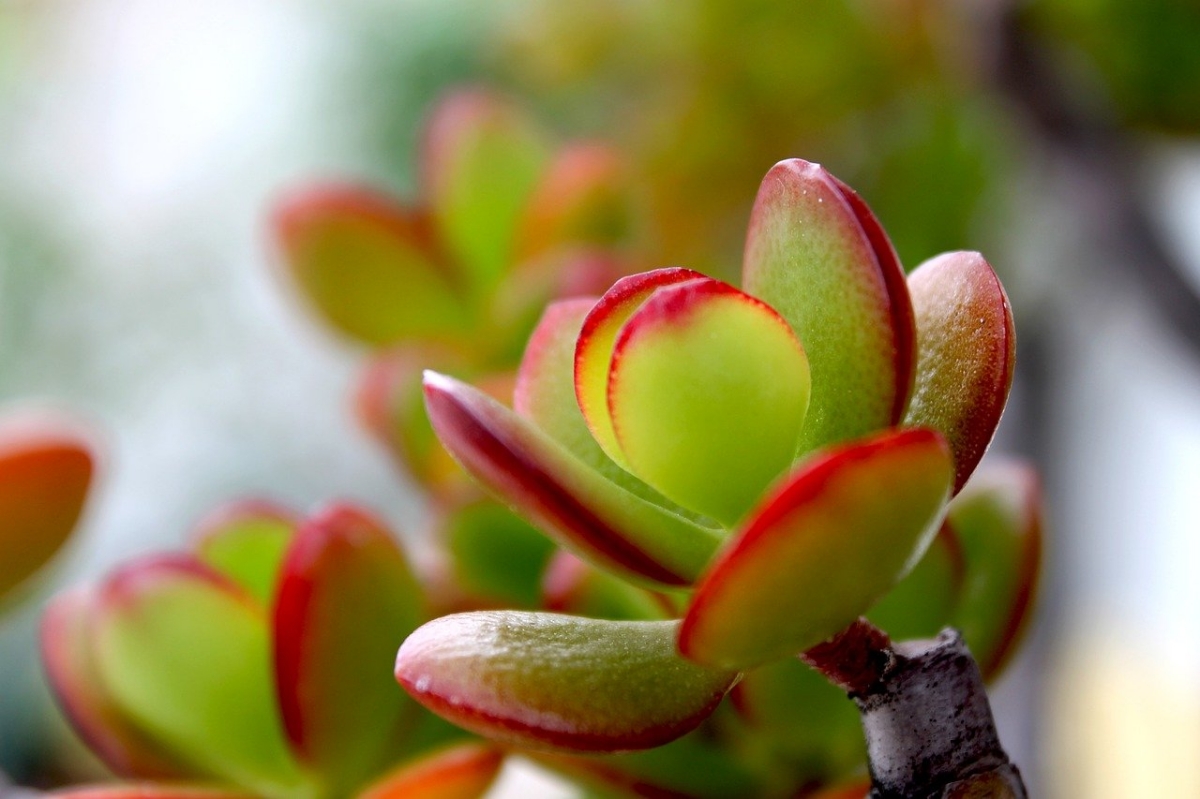
Crassula ovata
We could say that of all the non-cactus succulent plants that exist today, the Crassula are one of the most cultivated. Of course, who does not want to have a small bush in their house or on the balcony? These succulents are so grateful that even if they go to the extreme of leaving them without irrigation for many days in a row, by rehydrating them it would not be too difficult for us to get them to sprout.
But of course, it is always better to take good care of them. What does happen is that there are certain types of Crassula that are a bit more delicate. Let's see which are all the most cultivated.
Crassula arborescens
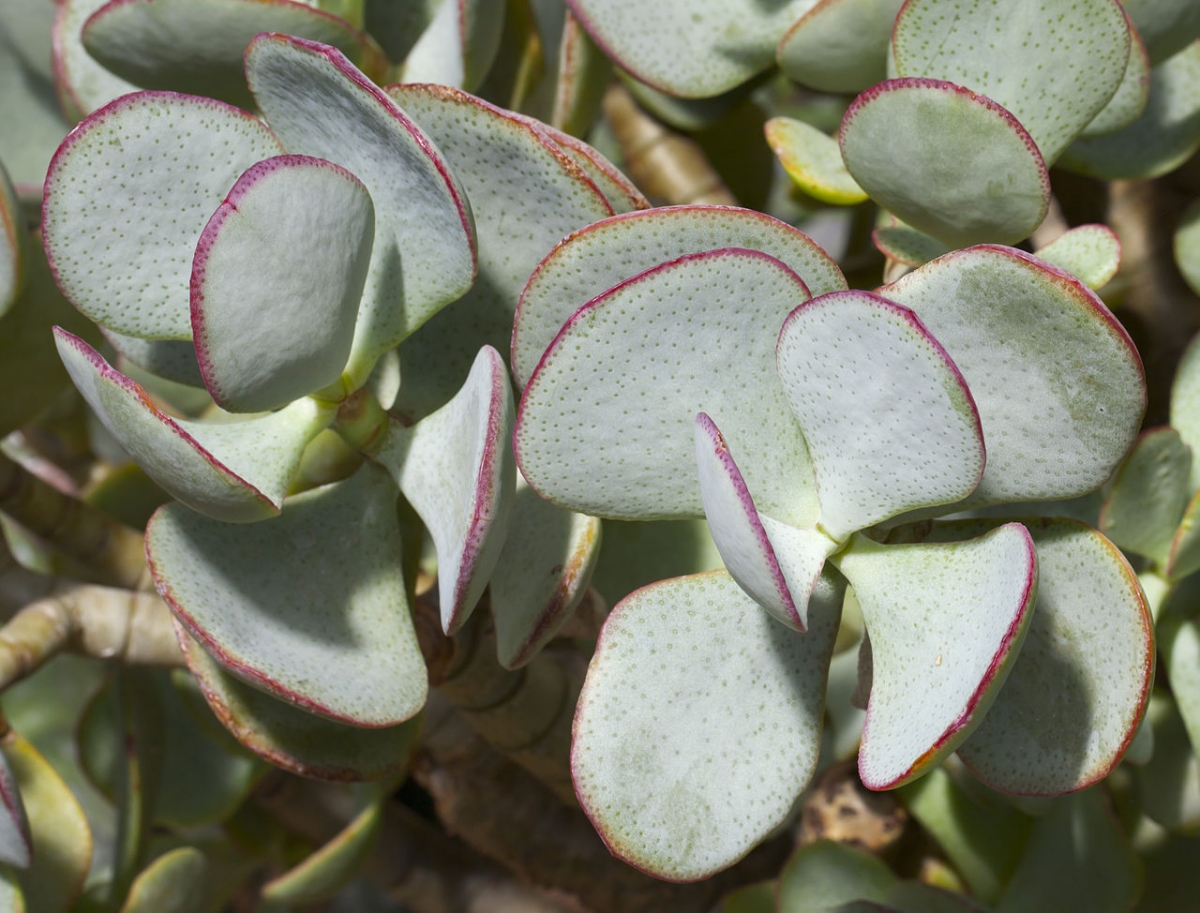
Image - Wikimedia / Diego Delso
La Crassula arborescens It is one of the largest of the genre, with a height that ranges from 60 centimeters to one and a half meters. It is endemic to the Cape, South Africa, and has whitish leaves with a red margin.
It can be grown in pots, both outdoors and indoors, if light is not lacking. For example, in a garden or on the terrace, whenever possible we will have it exposed to the sun directly; and inside the home we will look for a room in which there is a lot of clarity. Resists up to -3ºC.
Crassula falcata
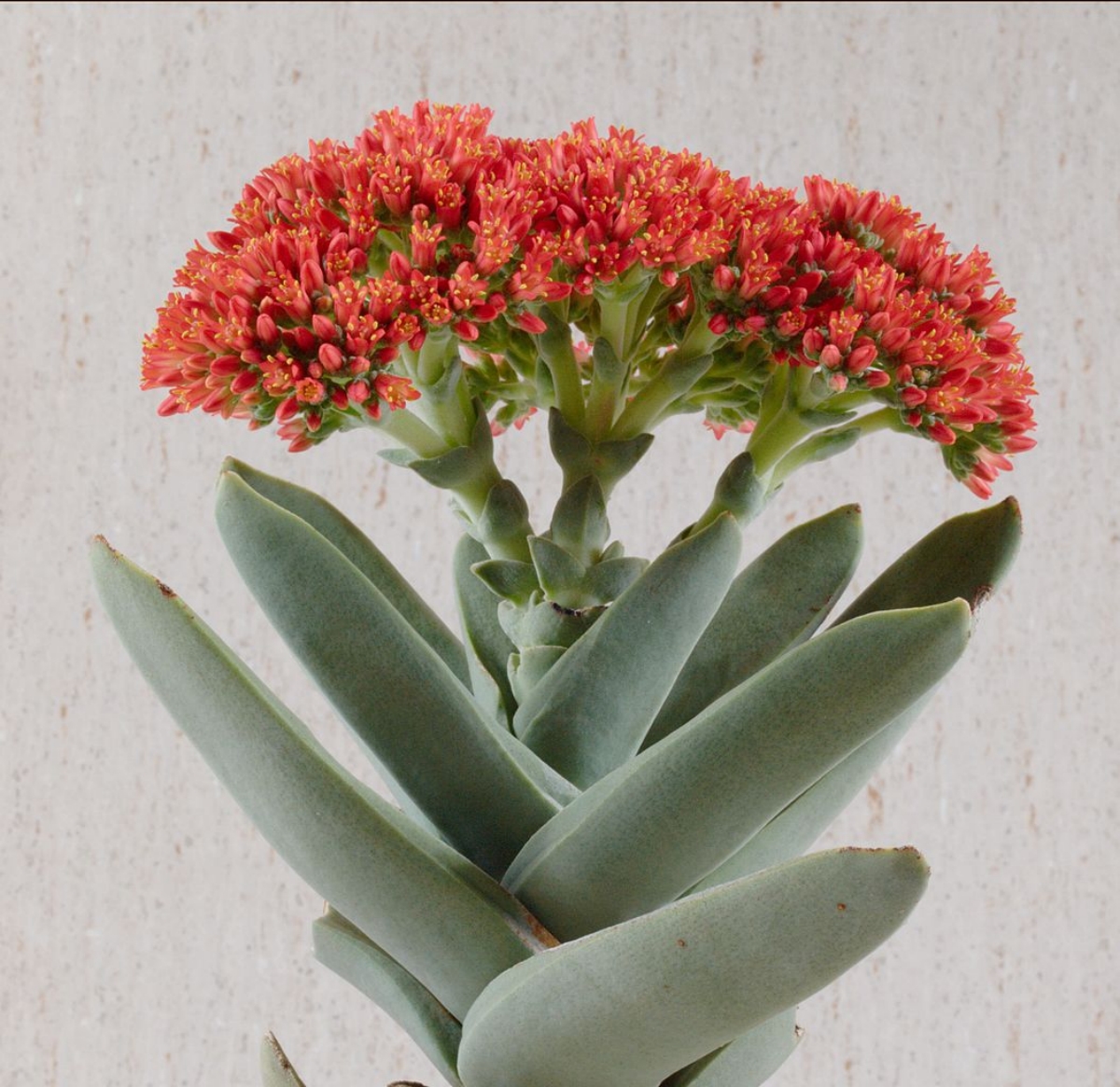
Image - Wikimedia / Groogle
La Crassula falcata is a small shrub native to the Cape that reaches a height of 60 centimeters, although it rarely reaches the subway. Its leaves are grayish green, and grow in pairs. The flowers are very showy, of a beautiful red color.
Like other Crassula species, it requires light to grow and well-drained soil. Likewise, it is important that it be watered little, since it fears waterlogging. It supports occasional frosts down to -3ºC.
Crassula lycopodioides
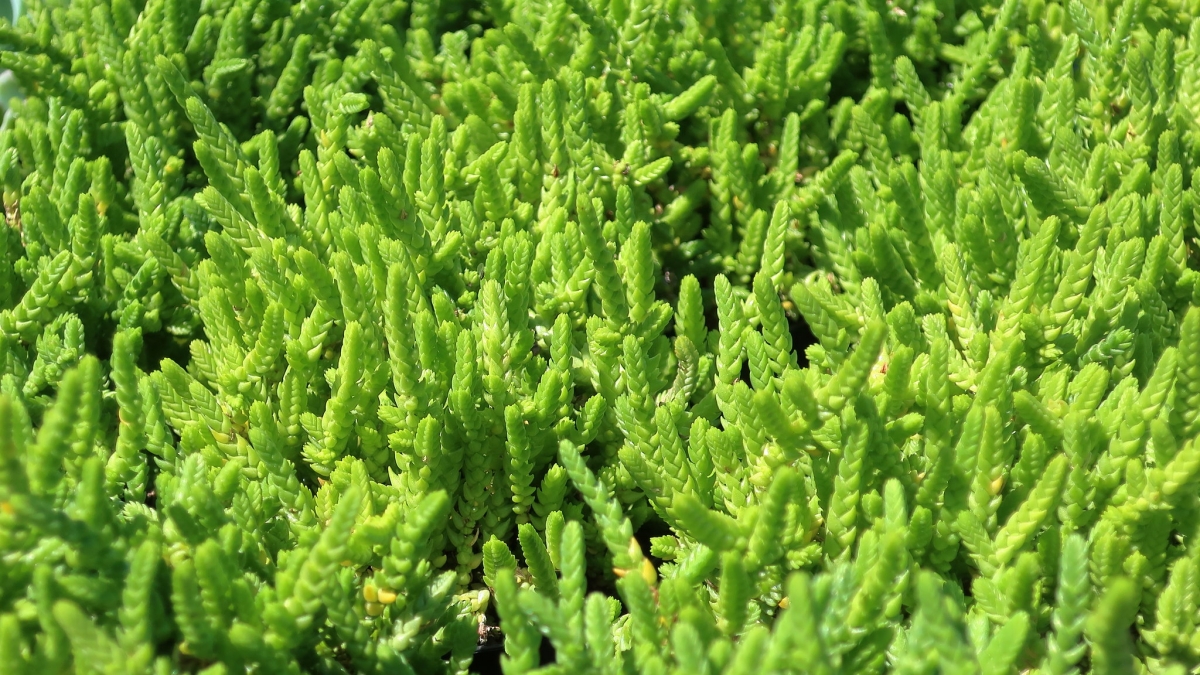
Image - Flickr / cultivar413
La Crassula lycopodioides (before crassula muscosa) is a crass native to South Africa and Namibia. It has an appearance that is reminiscent of moss, although it is not actually related to these types of plants. It develops thin and green stems whose height is 30 centimeters.
As for its care, it is important that it is kept in a bright area, and that it is watered from time to time. It can withstand the cold, but if frost is registered in your area, it is better to keep it indoors.
Crassula multicava
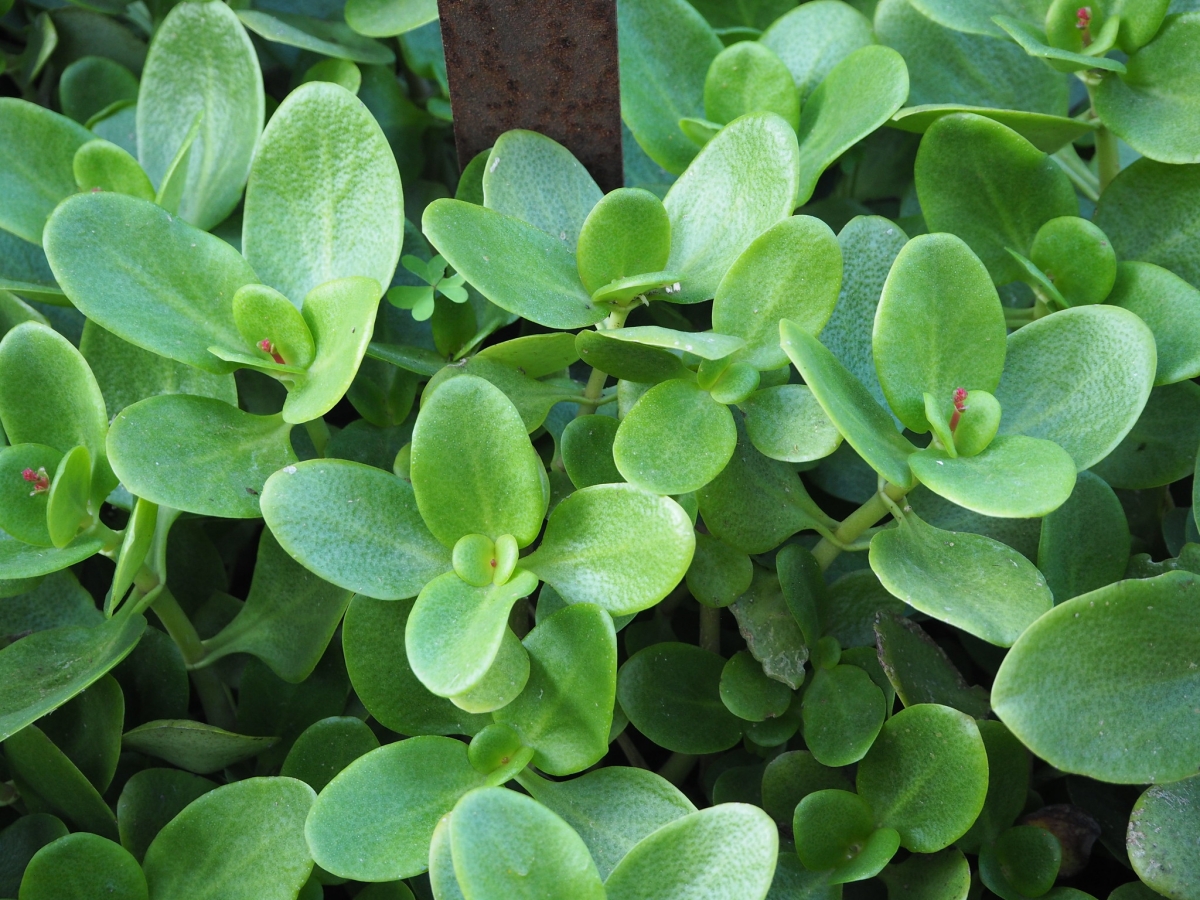
Image - Flickr / Teresa Grau Ros
La Crassula multicava is a native plant of Natal, in South Africa, known like Pride of London. Does not exceed 15 centimeters in height, so it is interesting to grow it in pots. It has green leaves, larger than those of other crásulas since they are up to 5-6 centimeters long by 2-3 centimeters wide.
It is not recommended to have it in the shade since in those conditions it would lose color; on the other hand, it can be kept in semi-shade. Resists up to -3ºC.
Crassula ovata
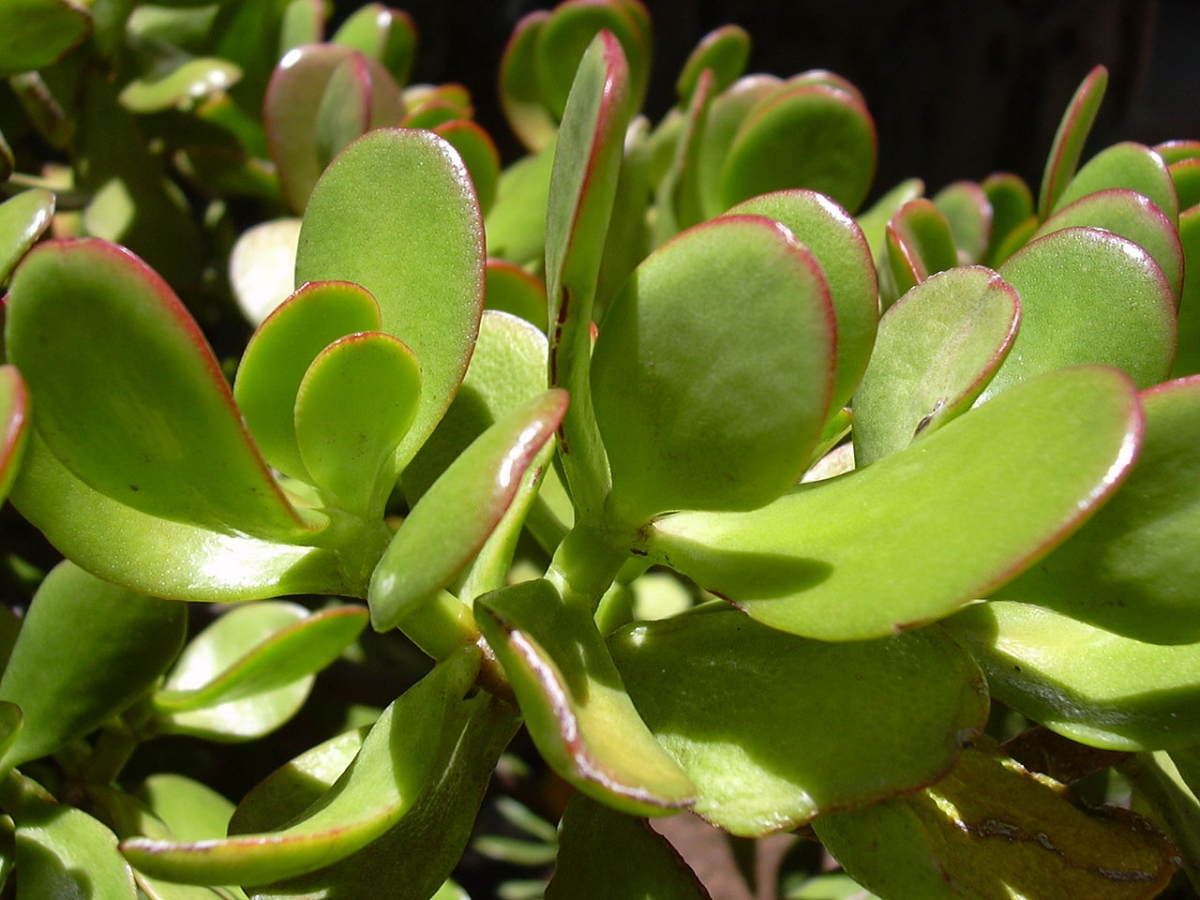
Image - Wikimedia / Forest & Kim Starr
La Crassula ovata (before call Crassula argentea o Crassula portulacea) is a shrubby plant that we call the jade tree. It is native to Mozambique, in southeastern Africa, and reaches 2 meters in height. The common name comes from the color of its leaves, which are jade green, although depending on the variety the margin is red when grown in full sun.
It is a succulent that is very easy to care for. We just have to place it in a place where there is light, and water it from time to time. It supports the cold and the minimum temperatures of up to -3ºC if they are punctual.
Want a? Buy it.
Crassula ovata 'Gollum'
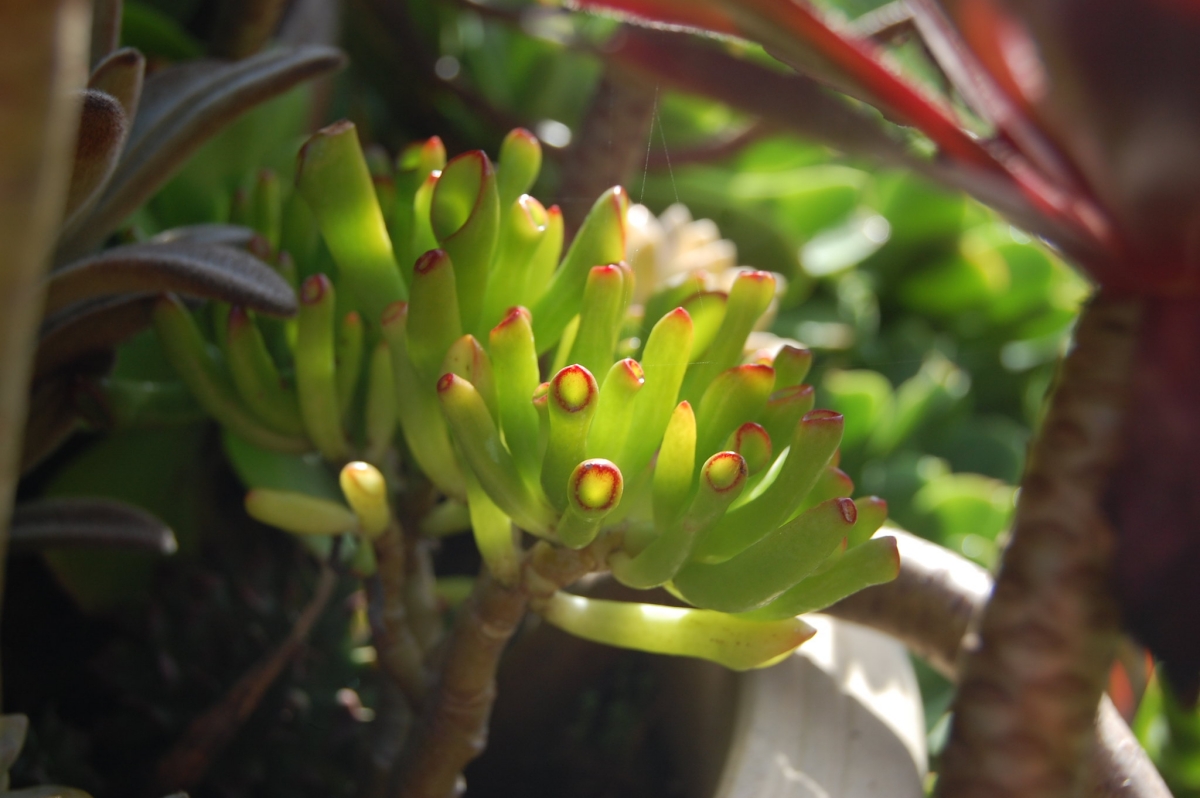
Image - Flickr / FarOutFlora
It is a cultivar of Crassula ovata. It is often called "Shrek's ears" because it has very strange looking leaves. These are tubular, jade green in color. It does not grow as much as the type species, but can be 90 centimeters tall. But otherwise, it is cared for in the same way.
Crassula perforata
La Crassula perforata It is the perfect succulent plant to have in the center of a small round table. During its youth and in direct sunlight it tends to develop erect stems, but over time they become a bit hanging. Reaches an approximate height of 45 centimeters, and its leaves are green to glaucous. It is a native species of the Cape (South Africa).
It grows very well in pots, but it is also interesting for rockery along with other succulents. It is well resistant to mild and occasional frosts down to -3ºC.
Buy your copy here.
Crassula 'Temple of Buddha'
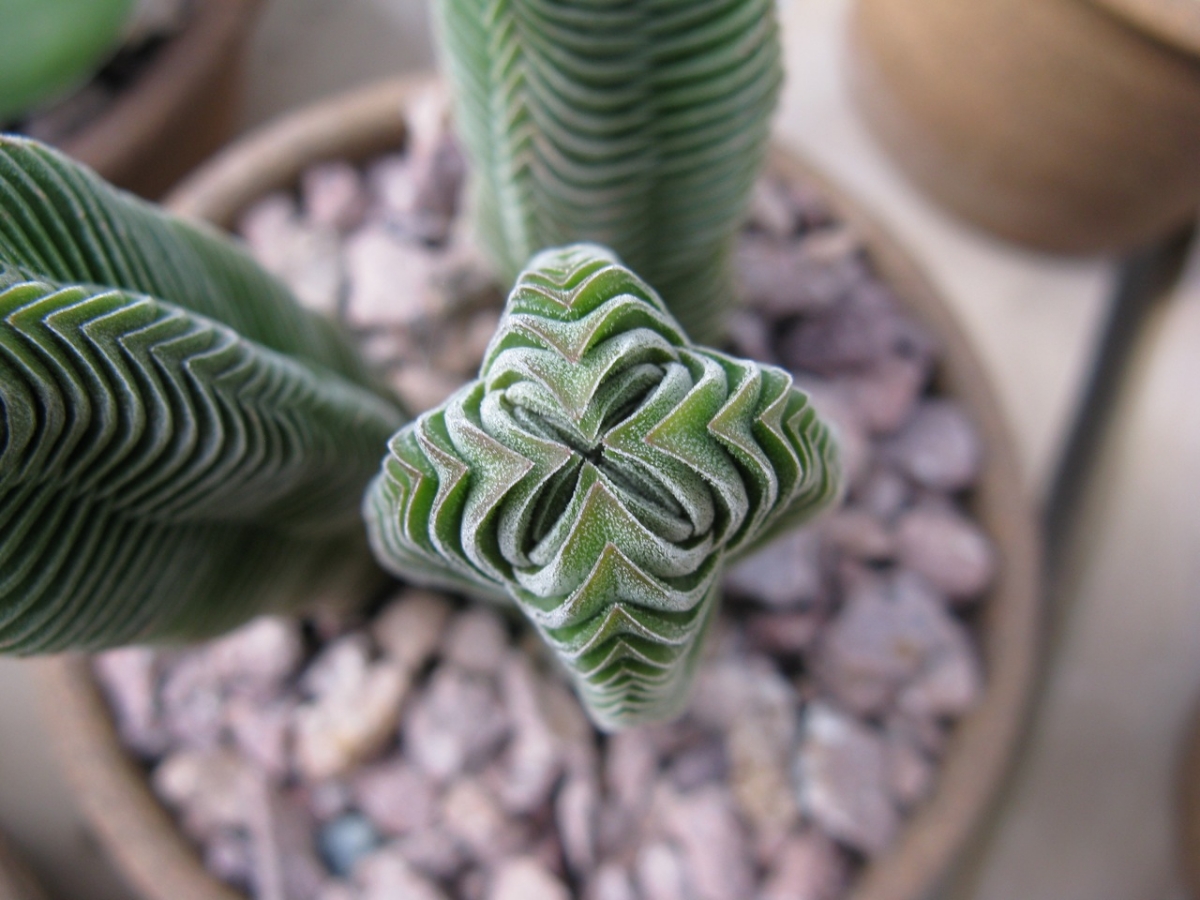
Image - Wikimedia / Nadiatalent
La Crassula 'Temple of Buddha' is a hybrid that comes from the cross of Crassula pyramidalis with Crassula perfoliata var. minor.Therefore, a small plant is obtained, with a maximum height of 15 centimeters, and with stacked greenish leaves. Its flowers are pink, and appear at the top of the stem.
It is one of the most delicate types of Crassula. It prefers the sun to shine but in a filtered way, and it also needs to be grown in a pot with volcanic sand, such as pomx, akadama or the like because it fears waterlogging. It does not support frost.
Crassula pyramidalis
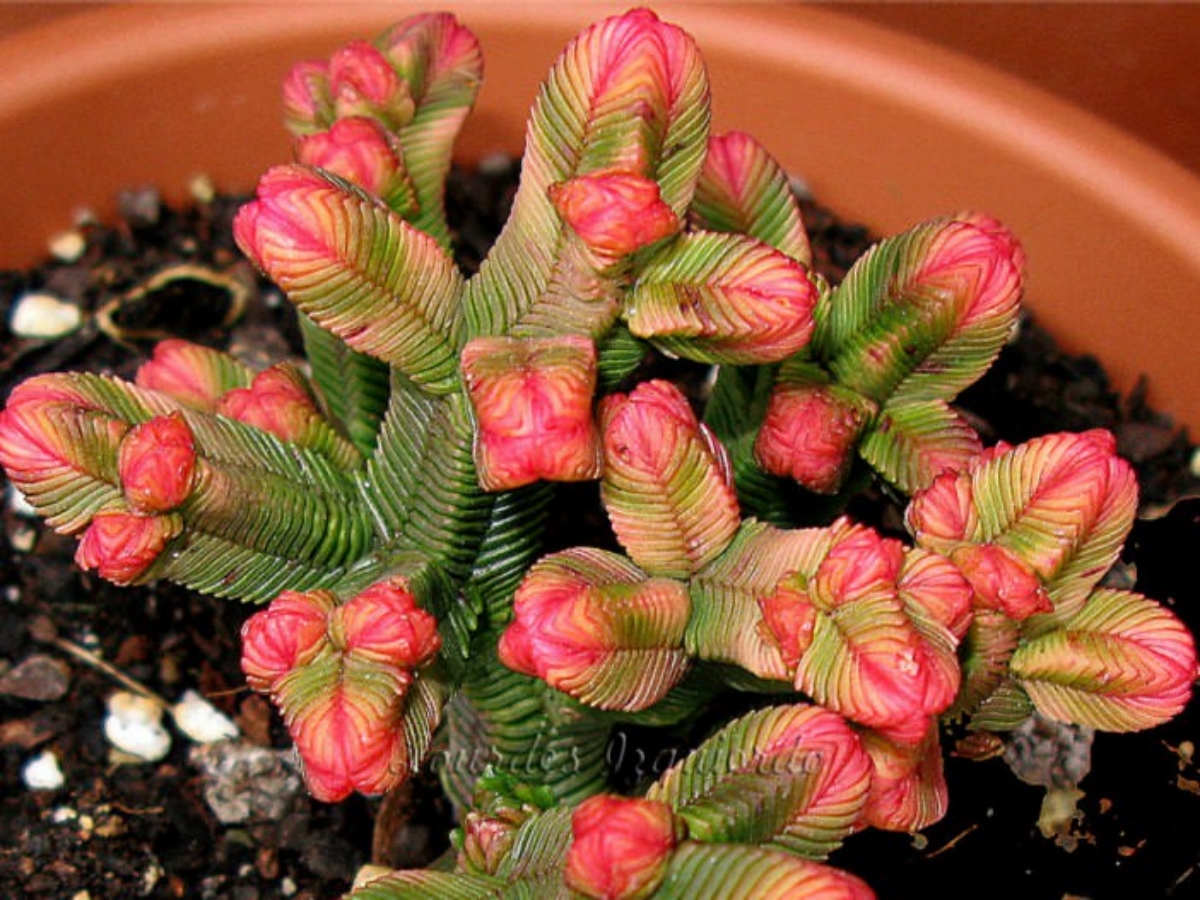
Image - Flickr / Lourdes
La Crassula pyramidalis it is a succulent native to South Africa. It is very curious since its leaves grow stacked on the stem, which is 20 centimeters high. The flowers are pink, and sprout at the top of each stem.
It has a fairly slow growth rate, something that added to its small size makes it an ideal succulent to have in pots. Of course, we have to put a substrate that drains the water well and quickly, and we will also water it little. Resists up to 0 degrees.
What do you think of these guys from Crassula?
